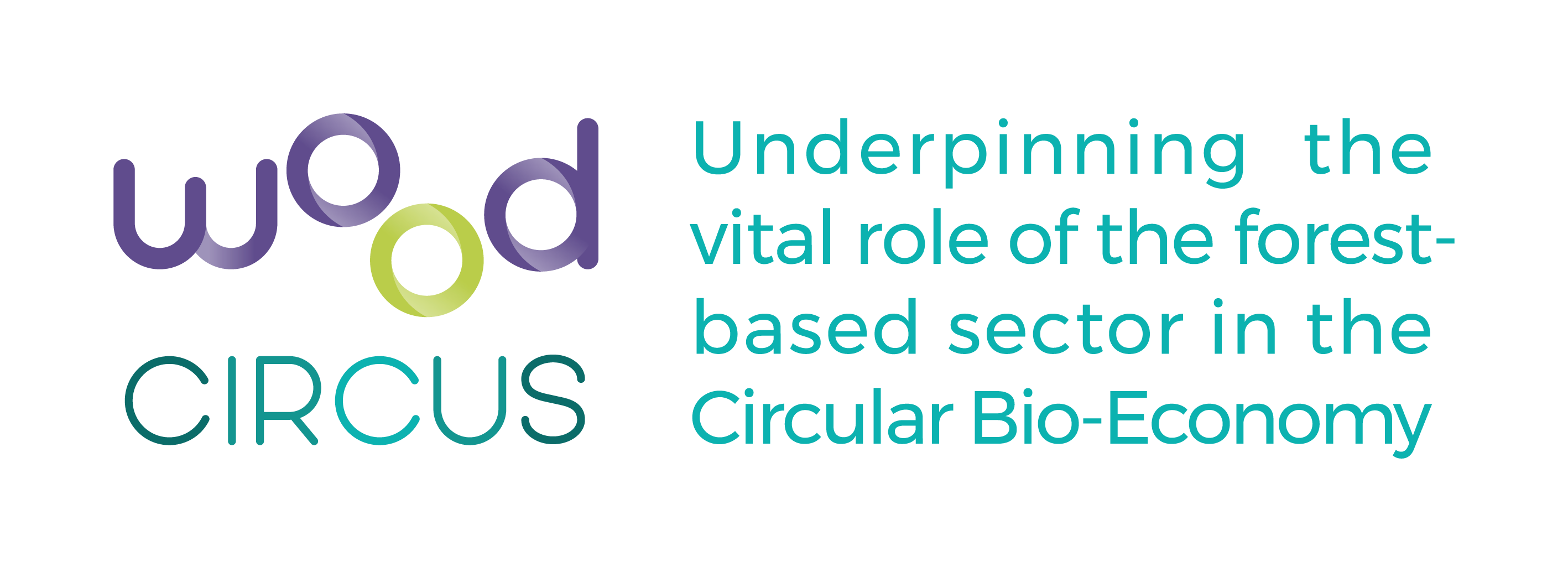Woodcircus
Main outcomes
Woodworking industries during the COVID-19 pandemic - specific changes, opportunities, and challenges
Building the foundation for the Circular Economy is one of the cornerstones of the EU Green Deal, Europe’s prime policy agenda for the transformation of the economy to a sustainable model. The Circular Economy Action Plan paves the road to reduce pressure on natural resources, to create sustainable growth and jobs while being a prerequisite to achieve the EU’s 2050 climate neutrality target. For the business sector, the transformation to Circular Economy means potentially large market opportunities, but also disruptive challenges in production and customer relations. Woodworking industries are identified as an important sector and key driver for achieving the goals in many EU policy strategies.
SWOT analysis for woodworking industries in the 4 European macro-regions
WoodCircus resulted in a general overview about the state of the art and development potential in the fields of circular bioeconomy in wood construction value chains in the four distinct macro-regions in Europe, such as wood waste recovery and recycling processes, management and utilization of industrial side streams, materials and products, organisation, and regulation of value chains (see WoodCircus deliverable report D2.2. [link]). Thanks to the fact-finding and direct involvement of stakeholders, it was possible to have a clear picture about several aspects of the wood products industries and waste management sectors:
3W Factor: Innovative European Woodworking industries in the Circular Economy
Engineered wood products are becoming more recognized in the Circular Economy as climate friendly, sustainable alternative for use in construction (new build or renovation), furniture, interiors, and a range of innovative applications. Wood products can effectively store potentially large amounts of carbon and keep them in reuse and recycling loops for a long time through additional lifecycle phases. Wood products are thus expected to play a major role in the decarbonization of the building sector and other industries. However, huge amounts of resources are currently still wasted or used inefficiently, which is why the wood sector needs to learn from good practices and adopt innovative circular solutions across the value chain.
European woodworking industries’ best practices in the circular economy
Looking into the role of the forest-based sector in the Circular Bioeconomy, we had to outline the stage of circularity. Now that wood is subject to fluctuations of prices, it feels even more urgent to update anyone about the approaches to make products and businesses circular. We need to think more about how wood can become a circular resource!
We summarized our findings from two of our work packages on a circular rating system for wood products and a good practices catalogue in 5 things that anyone should know.
LCAs on 5 good practices
Life-cycle assessment methodologies have been applied on the three domains (environmental, economic, and social) of sustainability of five selected good practices of efficient use of wood and provide recommendations accordingly. Based on the results of the individual case studies, this report presents conclusions and recommendations regarding aspects that could be of interest in more general terms. The aim of the report is not to compare the case studies as they are all different and not directly comparable. The target audiences for the report are the wood industry, the companies participating in this study, the European Commission and all stakeholders interested in this topic.
CONTACT US
Interested in joining the WoodCircus network? Please use the contact form to get in touch with us or contact directly the WoodCircus Ringmaster :
Project Coordinator
Anne-Christine Ritschkoff, VTT
Anne-Christine.Ritschkoff@vtt.fi
PROJECT COORDINATOR
VTT Technical Research Centre of Finland Ltd
Anne-Christine Ritschkoff
Anne-Christine.Ritschkoff@vtt.fi


